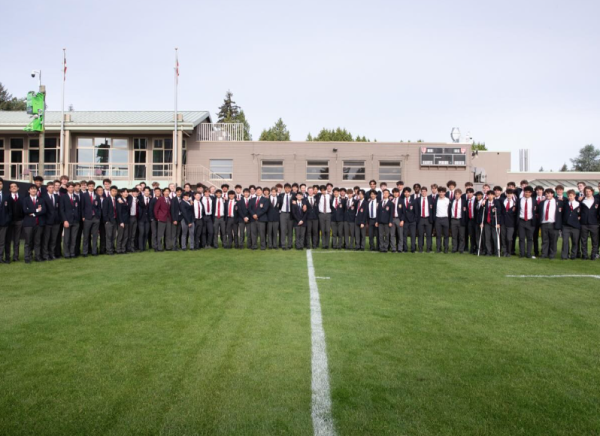This Day in History April Special: The Battle of Kapyong and how the unsung Canadian Military contributed to today’s world order in the World Wars

A propaganda poster encouraging citizens to enlist in the Royal Canadian Air Force
In a calm spring night of April 27th, 1951, the Chinese People’s Volunteer Army broke the world of silence and peace and assaulted the 27th British Commonwealth Brigades, consisting of Canadians and Australians, in the valley of Kapyong, South Korea. The Commonwealth forces had established defensive lining in the valley of Kapyong, a significant route that led directly south to the South Korean capital of Seoul, hours before the Chinese launched the offensive. Canadians and Australians, although heavily outnumbered by almost ten times, stood their ground. In the end, with more advanced tactics and military hardware and most importantly unsurpassed conviction, the Commonwealth forces defeated the Chinese, helping to prevent a Chinese breakthrough of the UN central front and ultimately the capture of Seoul. In short, the Canadian and the Australian lads basically saved South Korea from the red devil.
Yet, an event of so much importance is little known to today’s world. Canadians’ struggle in the preserving peace and democracy of the Korean people is hardly acknowledged. Without the Canadians, Mr. Kim Jung-Un might not only be the emperor of North Korea, but that of the whole Korean Peninsula. The Battle of Kapyong does not stand alone. When mentioned about the Second World War, people always remember events such as the glorious Battle of Stalingrad when General Georgy Zhukov brought the Russian victorious against the seemingly invincible 6th Army of Nazi Germany, or the Battle of Leyte Gulf, where American fleet stomped upon the Japanese, crushing them so terribly that the empire of the sun never sailed out in large number again. People tend to remember the countries that win big and come out as world powers, but often forget about countries of smaller, but equally significant involvements. Canada is one of these countries; its engagements are of small size and are often forgotten in the voluminous encyclopedia of military histories, but they are nevertheless crucial in shaping the world as it is today. As facts and statistics have again and again shown, Canadian forces have again and again demonstrated unmatched discipline and peerless strategic superiority in recent times of conflicts. In below paragraphs, the readers will revisit the heroic Canadian involvements in both World Wars.
Start with the First World War, Canada only had a population of eight million at the time. Guess how men and women served in the Canadian forces? 619,636 people served in the military during the course of the war; that’s eight percent of the whole population! Canadian fought bravely alongside of their British Commonwealth comrade in famous battles of Ypres, Somme, and Passchendaele. Notably, Canadians fought for the first time as a Corps in the Battle of Vimy Ridge. Four of the Canadian divisions joined together and supported by one British division defeated the German Sixth Army and captured the Ridge on April 12th. Canadians lost about 3000 men in the battle. Canadians exemplified themselves in battle as the bravest units in the war. During the Hundred Days Offensive, Canadians divisions engaged, defeated or engaged and defeated forty seven German divisions, which represented a fourth of total German forces faced by the Allied Powers. Canadians’ outstanding achievement distinguished themselves from others, having their success named “Canada’s Hundred Days.”
It is important to bear in mind the fact that Canada was the only country in the Americas that was actively engaged in the war prior to the Attack on Pearl Harbour. With the outbreak of war in Europe, Canada transformed its military. By the end of the war, Canada would have about 10% of the entire population served in uniform; they Navy grew from almost nonexistent to one that consisted of 400 ships, including three aircraft carrier and two battle cruisers. The maritime effort was significant in keeping the shipping lanes across the Atlantic throughout the war. In the meantime, Canada’s industries were put to good uses manufacturing military hardware during the course of the war. Canada’s production amounted for 20% of Canada, the US and the UK. Notably, rivals Ford and General Motor of Canada teamed up and designed the standardized Canadian Military Pattern Truck that served throughout the British Commonwealth in massive numbers. Scholars often argued that the productions of trucks, including the Canadian Military Pattern type, was the Canada’s most important contribution to Allied victory. Another major homefront war effort was the British Commonwealth Air Training Plan. The scheme was by all means effective – producing 1460 airmen every four weeks under the plan. Oversea, Canadians fought few engagements until the Italian Campaign. Canadians soldiers went ashore in the Allied invasions of Sicily and mainland Italy, fought through the long campaign and eventually became one of the firsts to enter Rome. At the end of the Campaign, 25000 Canadians became casualties of war. Notable engagements in Italy include the Battle of Ortona, where Canadian division defeated the battle hardened German 1st Parachute Division. At Ortona, both parties of combatants suffered heavy casualties; the fighting was later nicknamed “Little Stalingard.”
Canadians, with dedication and determination, distinguished themselves in their wartime contributions. Canada asserted its pursuit for world peace through its actions during these hard times, and continues to do so in its current peacekeeping duties with the United Nations. The current generations of Canadians are all beneficiaries of those who sacrificed tremendously during times of crisis, therefore it becomes the duty for the citizens to commemorate those braves who came before us and to cherish and protect the fruits of their perseverance.

Horatio Chiang is the real life Han Han, eleventh grader at St. George's School. Han is new to St. George's and feels fortunate and privileged to be involved...












Jay Jin • Apr 30, 2014 at 1:03 pm
You’re right in describing the importance of the victory at the battle of Kapyong.
But your date is slightly off the recorded fact. It was April 23th(not 27th), 1951.
It is largely remembered as achievement of Australian 3rd battalion instead of common achievement of the Canadian and Austraian battalions. One of the reasons might be that Aussies encountered the Chinese attacking division, first.
The Common Wealth 27th Bridate’s defensive position at that night was such that Canadian battalion was on the left of the Kapyong River, while the Australian battalion on the right side of the River. Aussies were slightly north of Canadians. So it was natural the Aussies encountered the Chinese first. The rest were as you described. They were massively outnumbered by the Chinese. But they helded on over the night, in the following morning the allied close air support virtually wiped out the Chinese division.